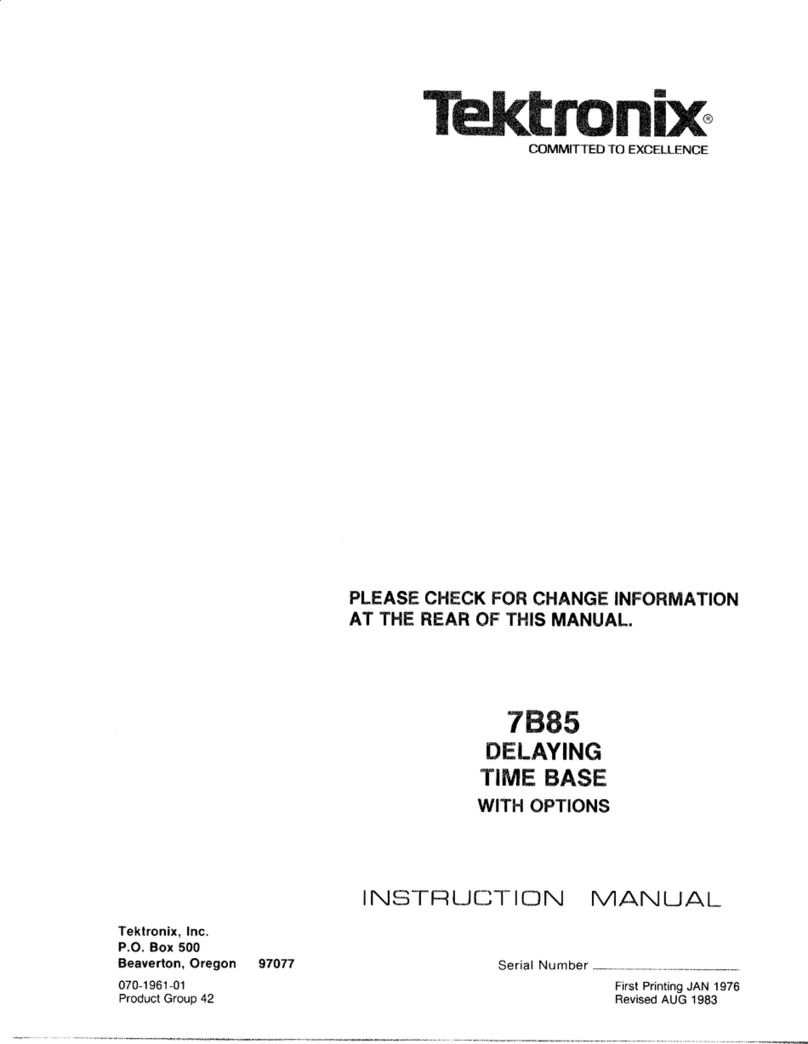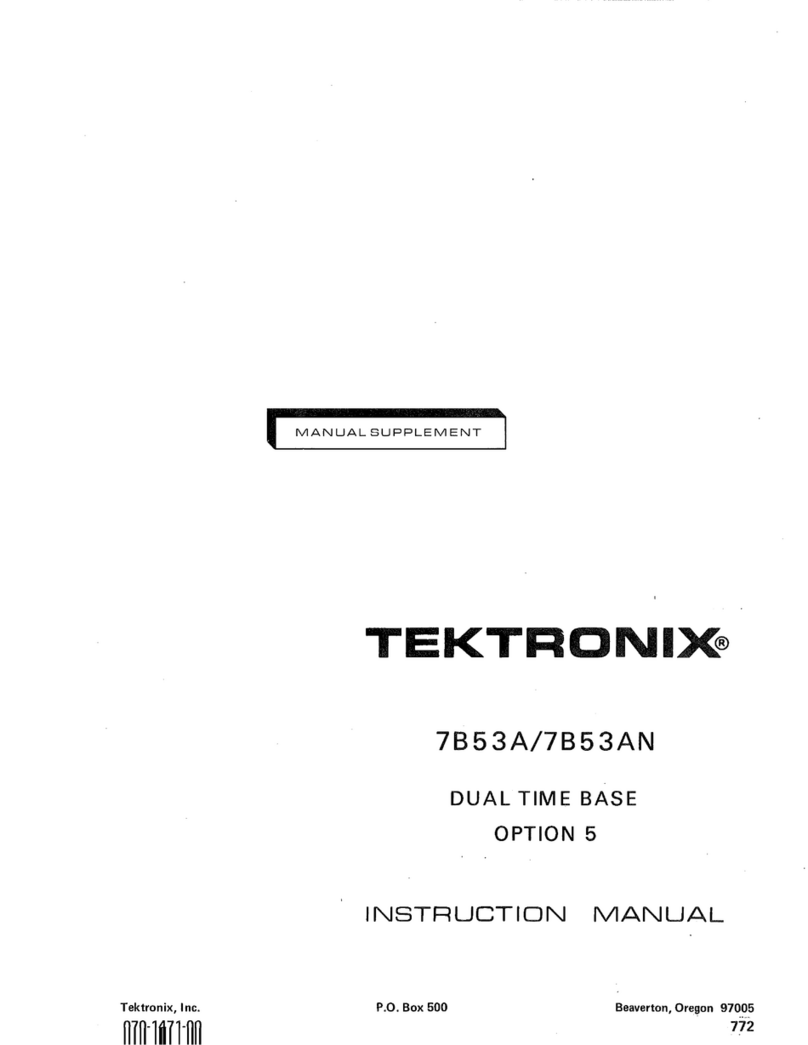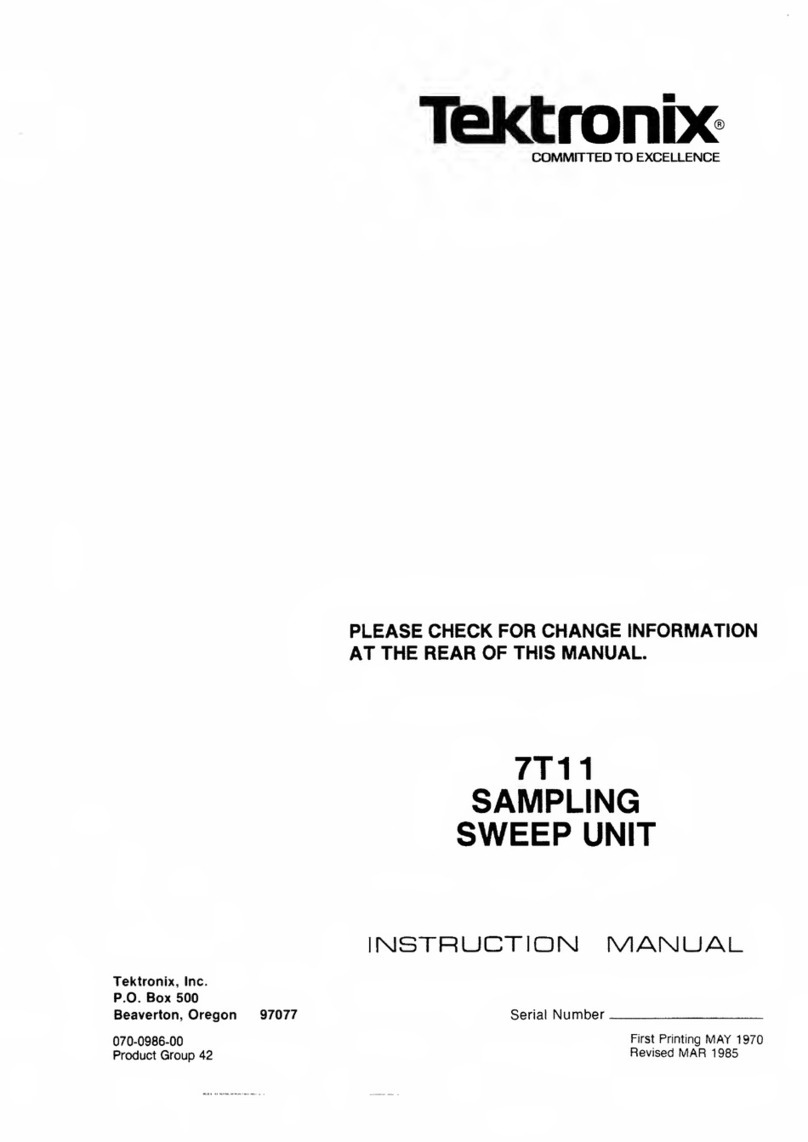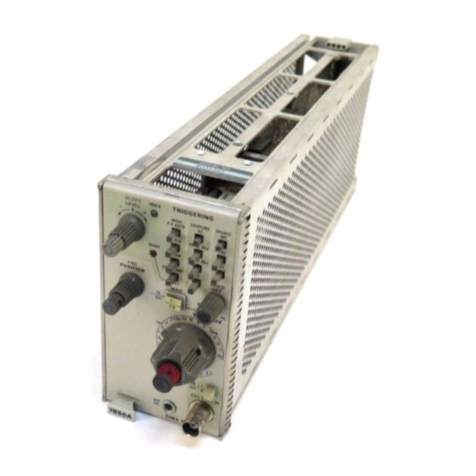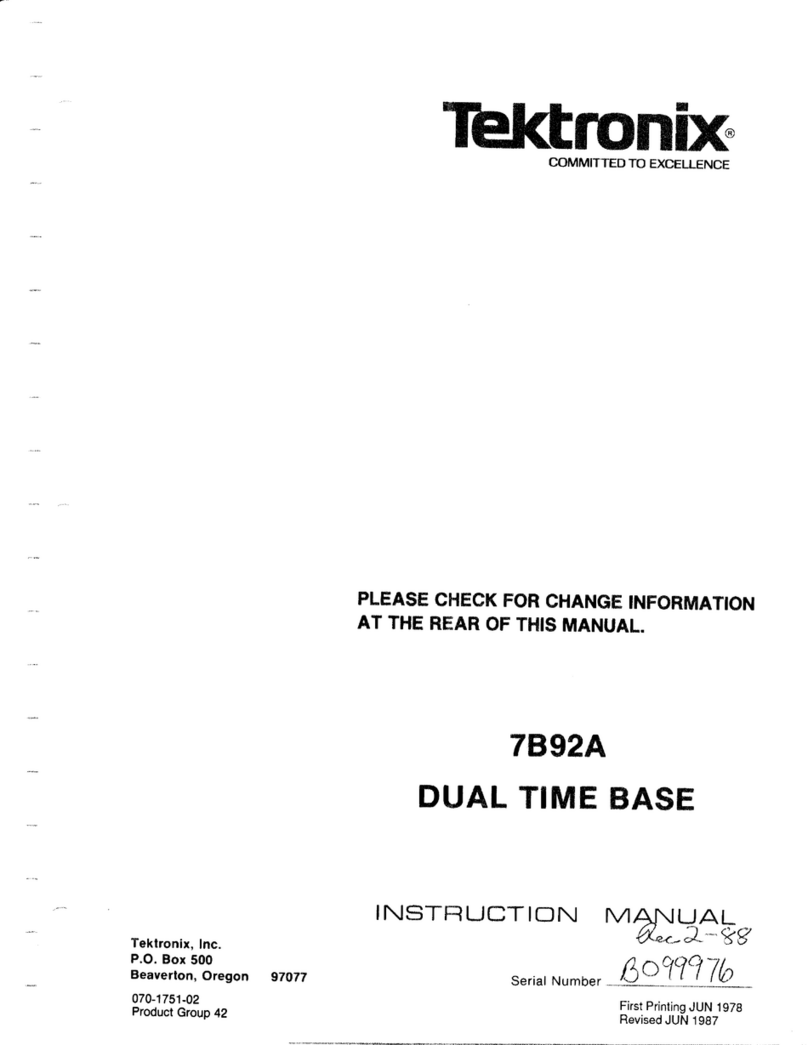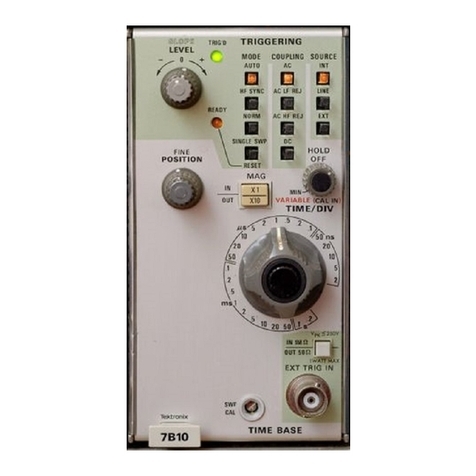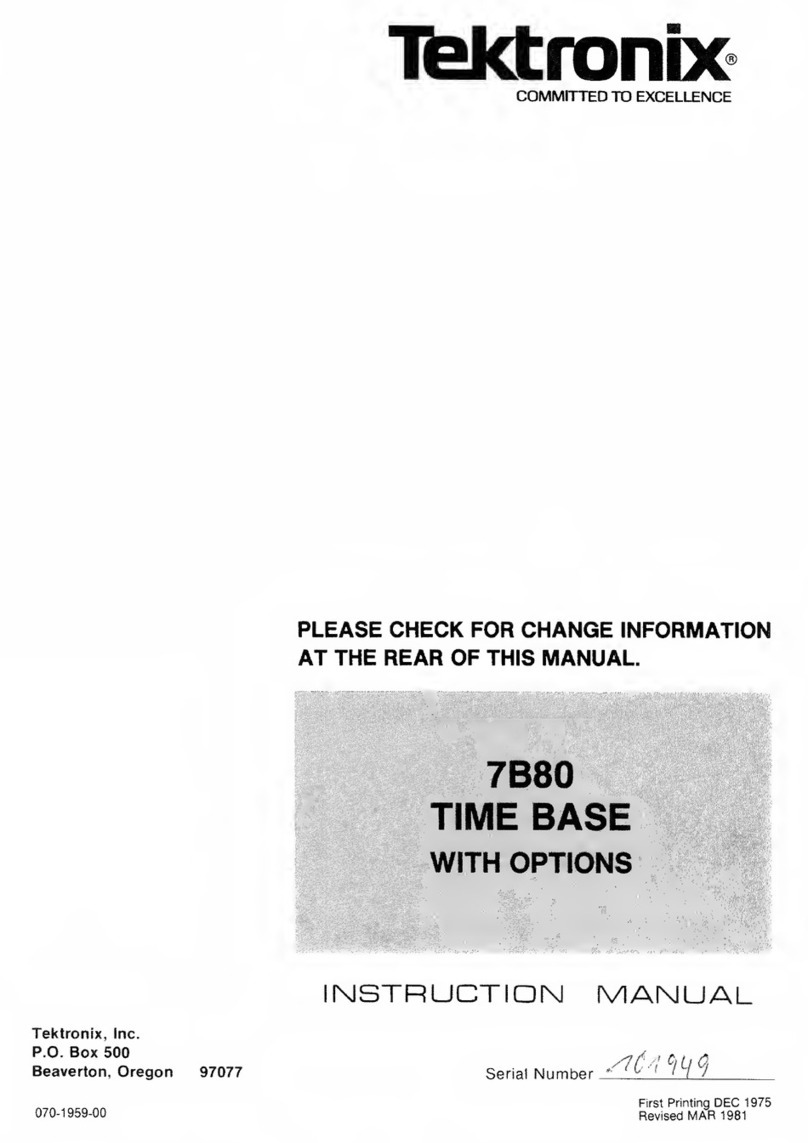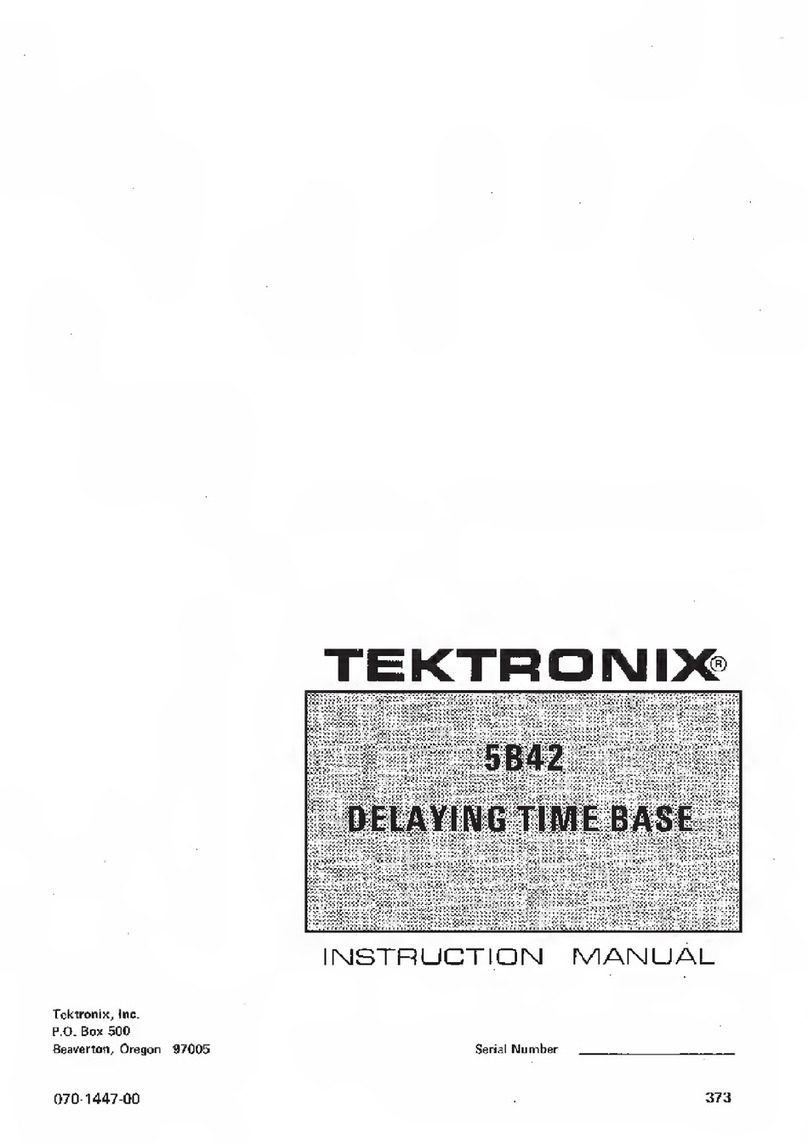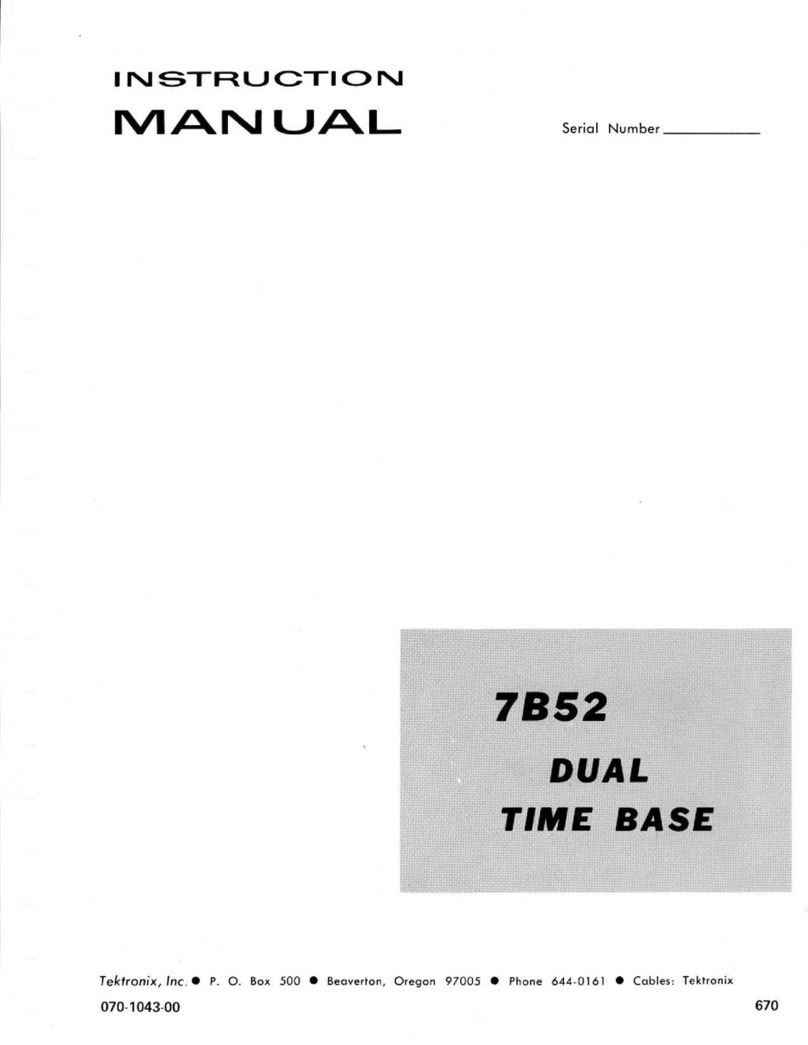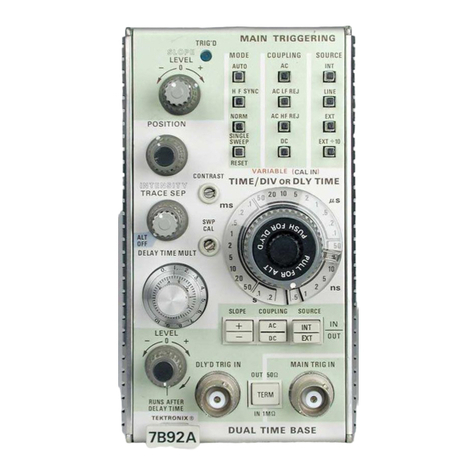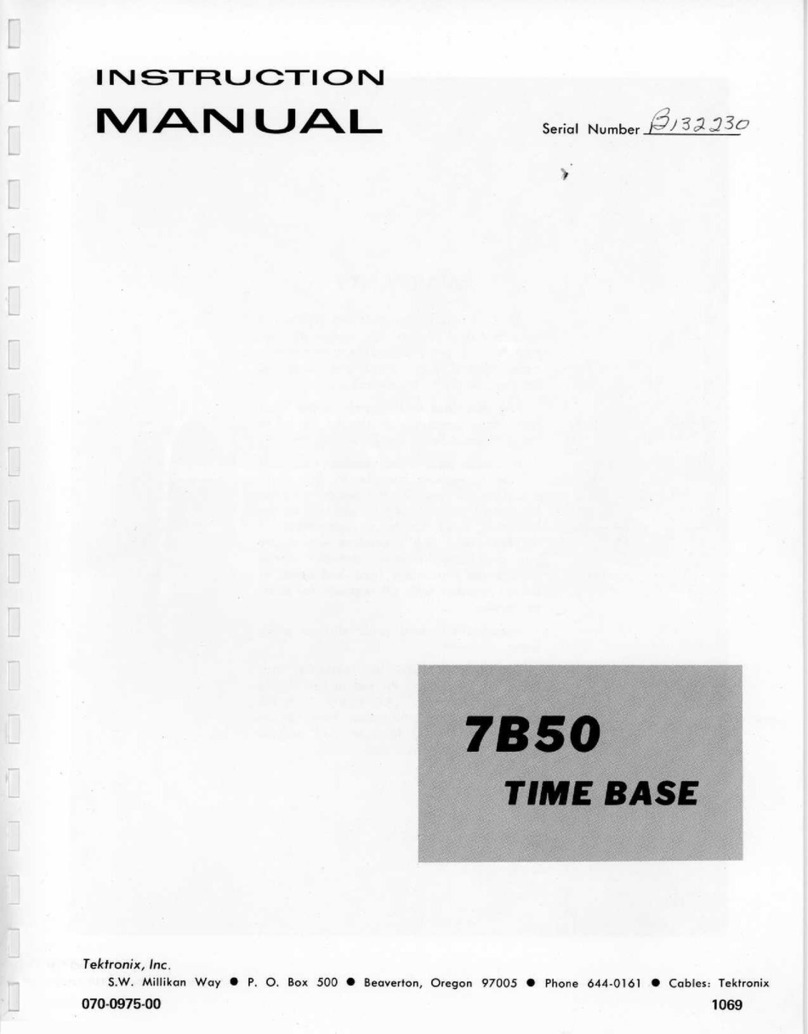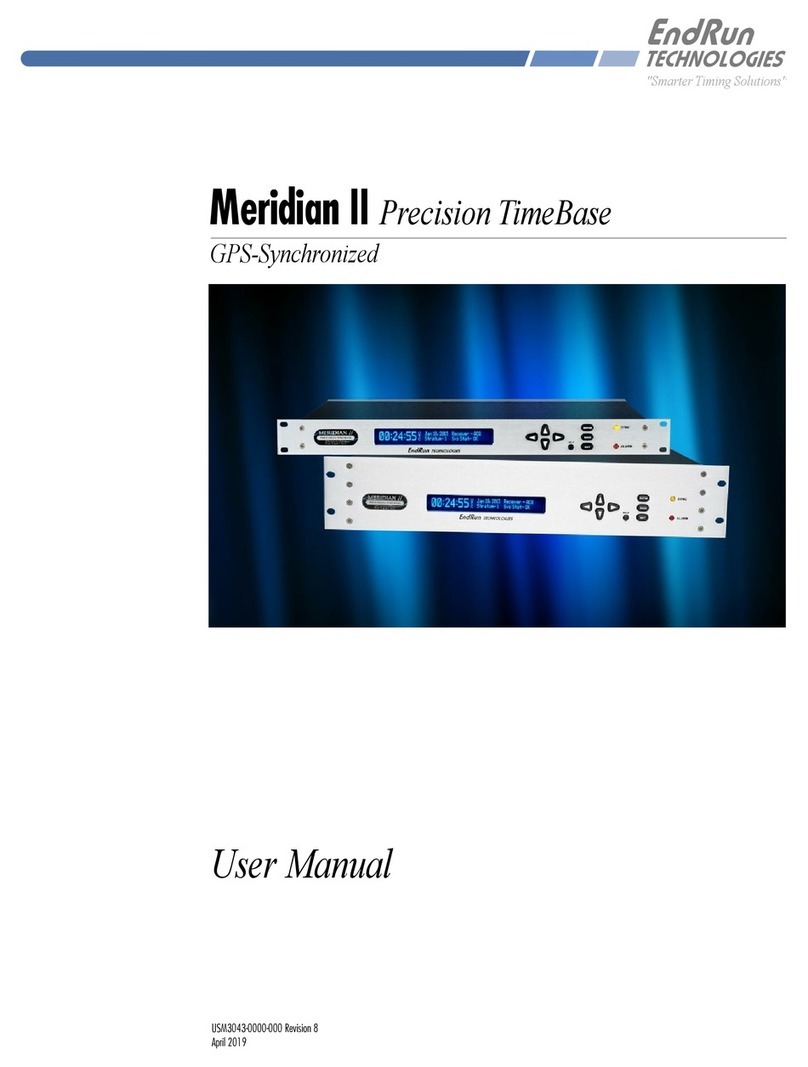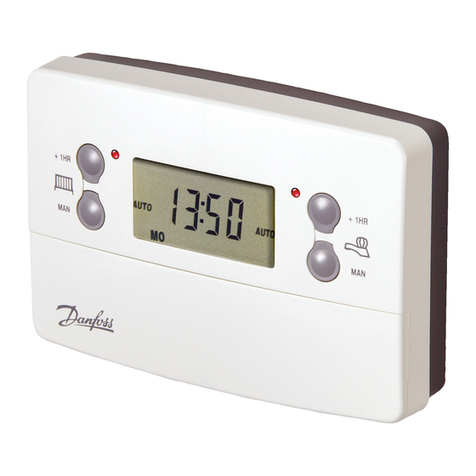
Section
1-7880
The 7680 Time-Baseunitoperates with
a
Tektronix 7700-, 7800-,and 7900-seriesoscilloscope mainframes and
a
7A-series
amplifier unit toform acompleteoscilloscopesystem. This section describes the operation of the front-panel controls and
connectors, providesgeneral operating information, afunctional check procedure, and basic applications for this instrument.
INSTALLATION
The time-base unit
is
designed tooperate inthe horizontal
plug-in compartment of the mainframe. This instrument
can also be installedin
a
vertical plug-in compartment to
provide
a
vertical sweep on the crt. However, when used in
this manner, there are no internal triggering or retrace
blanking provisions, and the unit may not meet the specifi-
cations given inSection 2.
To install the unit in
a
plug-incompartment, push
it
inuntil
it
fits firmly intothe compartment. The front panel of the
unitshould be flush with the front panel of the mainframe.
Even though the gain of the mainframe
is
standardized,the
sweep calibration of the unitshould be checkedwhen in-
stalled. The procedure for checking the unit is given under
Sweep Functions in the Functional Check procedure inthis
section.
To remove the unit, pull the release latch (see Figure 1-1)
todisengage the unit from the mainframe, and pull
it
out of
the plug-in compartment.
CONTROLS, CONNECTORS, AND INDICATORS
All controls, connectors, and indicators required for the
operation of the time-base unit are located on the front
panel. Figure 1-2shows and provides
a
brief description of
all front-panel controls, connectors, and indicators. More
detailed information is given in the General Operating
Instructions.
FUNCTIONALCHECK
The following procedures are provided for checkingbasic
instrument functions. Refer tothe description of the con-
trols, connectors, and indicators while performing this pro-
cedure. If performing the functional check procedure
reveals
a
malfunction or possible improper adjustment, first
check the operation of the associated plug-in units, then re-
fer tothe instruction manual for maintenanceand adjust-
ment procedures.
Setup Procedure
1. Install the time-base unit being checked inthe A hori-
zontal compartment of the mainframe.
2. Install an amplifier plug-in unit inavertical compart-
ment.
3.
Set the time-base unit controls
as
follows:
SLOPE
MODE
COUPLING
SOURCE
POSITION
TIMEIDIV
VARIABLE
(CAL IN)
HOLDOFF
MAG
(+I
P-PAUTO
AC
INT
Midrange
1ms
Calibrated (Pushed in)
MIN (fullycounter-
clockwise)
XI (pushed in)
4.
Turn on the mainframeand allow
at
least 20 minutes
warmup.
RELEASE
LATCH
1958-3
Fig.
1-1.
Location of release latch.
Scans
by
ArtekMedia
O
2006
